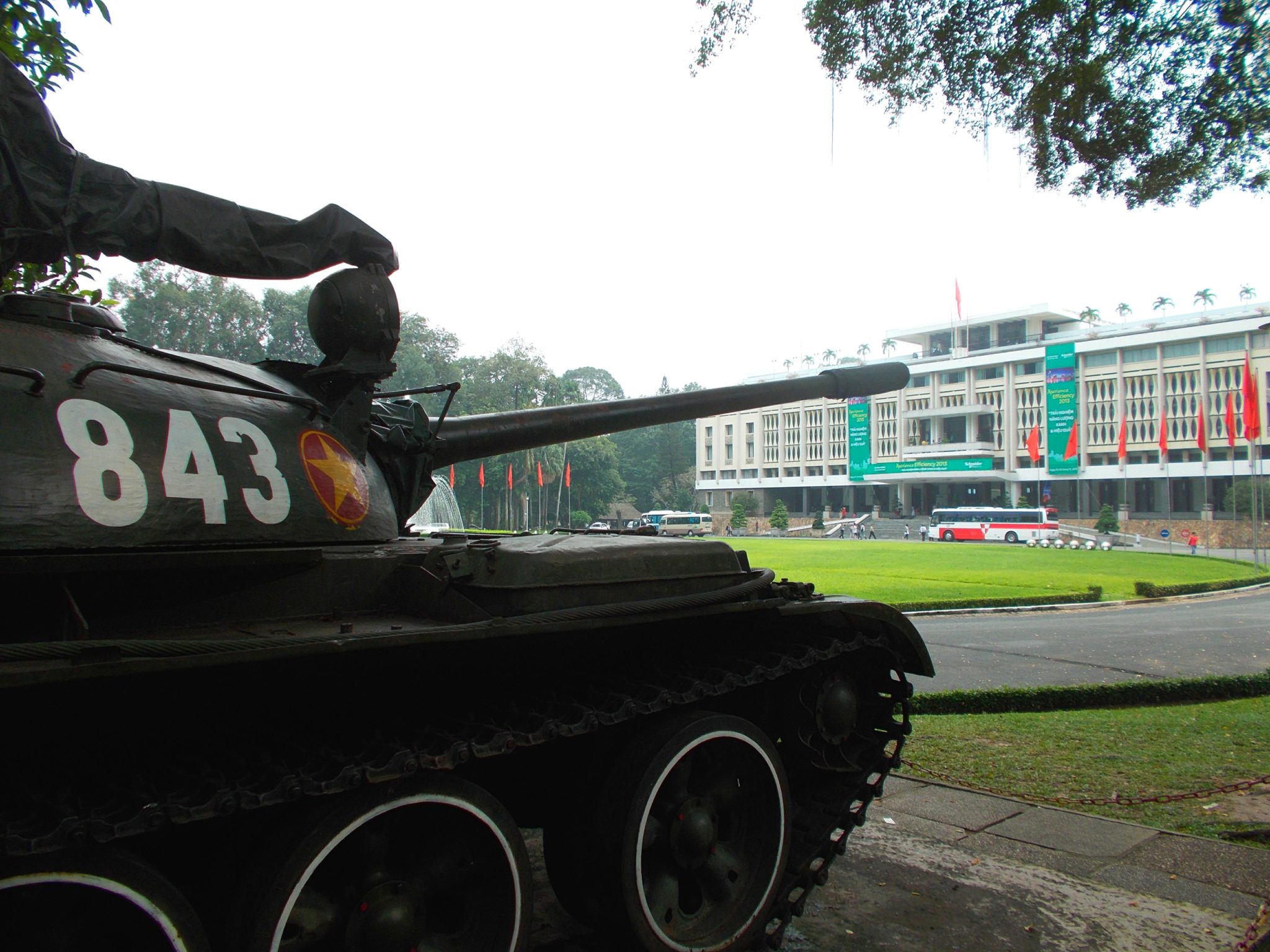Learning how to cross the road and other things to do in Ho Chi Minh City (Saigon)
When you visit Vietnam the first and most important thing to do is to learn how to cross the road! Motorbikes and scooters fill every available space on the roads in Vietnam’s exciting and rapidly modernsing cities which makes crossing the road a somewhat daunting task!
I calmly step into the oncoming buzzing, whizzing horde of motorbikes that swarm around me, narrowly missing me and allowing me to pass through miraculously unscathed to the other side of the street.
After 3 weeks in Vietnam, finally I had conquered the art of crossing the road – basically just bravely step into the oncoming traffic and walk slowly across.
From the atmospheric capital of Hanoi down the length of Vietnam to modern and cosmopolitan Saigon, a buzzing, dizzying city whose relentless energy is driving Vietnam’s booming economy forward.
Saigon was actually renamed Ho Chi Minh City after Vietnam’s reunification but everybody still calls it Saigon. HCMC mixes colonial and war history with a modern city surging forwards. Just the name conjures up images of French elegance coupled with the messy war and underneath the cover of the modern metropolis there is still fascinating colonial and war history by the bucket load.
Be prepared for a heavy dose of anti French and anti American propaganda in Vietnam. There’s no objective analysis here, this country is fiercely proud of it’s independence and has a long history of seeing off invaders. First, the Chinese then the French and then, when the American’s became involved in what started as a civil war between the communist North and South Vietnam, the Vietnamese were determined that they too would be vanquished, whatever it took.
Things to do and see in Saigon
Saigon’s War Remnants museum is not for the faint hearted. Inside is a chilling and gruesome account of American atrocities of the war complete with some rather sickening photos and upsetting consequences of chemical weapons such as agent orange . Of course the Vietnamese would have committed heinous acts as well but don’t expect an objective view.
The huge helicopters, tanks, planes and weapons captured from the US that are displayed in the courtyard really contrast to the primitive traps, weapons made from collected scrap metal and the tiny claustrophobic tunnels seen at Cu Chi used by the Viet Cong not far from Saigon
The Cu Chi tunnels covered a vast area and reached to the Cambodian border and as the tunnels were only 30km away from Saigon they were strategically important for the Viet Cong trying to reunify the country by capturing the capital of South Vietnam. There was even an American base nearby but they didn’t know about the vast network of tunnels so close by.
Ingenious traps and weapons used by the Viet Cong can be seen at the Cu Chi Tunnels. You can crawl through some of the tunnels at Cu Chi and get a feel for how claustrophobic the conditions were (even though they have widened them for western tourists) and feel the amazing, tenacious and determined spirit of the Vietnamese and the contrast makes you realise just how impressive and against the odds the Vietnamese victory was.
The reunification or independence palace was built in Saigon in 1966 to serve as the presidential palace for (the USA backed) South Vietnamese government. From the outside it is a somewhat post modern concrete monstrosity but is surprisingly elegant and tasteful inside. The building seems stuck in a 1960s time warp from when the North Vietnamese smashed through the gates on the 30 April 1975 and consequently Saigon surrendered to the North. The tanks that did so are still proudly displayed outside.
Also worth a look is the history museum and HCMC museum are both housed in historical, beautiful houses displaying other, equally fascinating, aspects of Vietnamese history.
A mixture of old and new
French colonial architecture also remains, especially in the classy Dong Khoi street area which is also home to swish designer shops. Saigon’s People’s Committee Building, better known as the old Hotel De Ville is probably the most iconic French colonial building in Vietnam with it’s elegant, sculptured window ledges, bright yellow paint and chateau like roof.
The art deco Post Office still operates and is worth a look inside at the old fashioned booths and impressive curved roof, with obligatory Ho Chi Minh portrait. The Opera House also showcases grand French art deco architecture and the Notre Dame Cathedral could be in Paris with it’s elegant and classical spires.
Saigon is Vietnam’s most vibrant and buzzing metropolis. Whatever you want you can get it in vibrant Saigon. There are high rise buildings, the modern Bitexo Financial Tower with great city views from the Saigon Skydeck, designer shops, hectic shopping malls, cheap chaotic markets rub shoulders with international fast food brands, classy French gourmet restaurants and pumping bars.
But amongst the Vietnam that is surging forward to modernity take time to take in the real buzz of Vietnamese culture. Watch as the amazing Vietnamese street life ebbs and flows as millions of motorbikes whizz past thin buildings that teeter above amongst the tangle of electric cables.
For me, the buzzing street life is the highlight of Vietnam’s cities
Women in conical hats hawk their wares in baskets balanced over their shoulders and the smell of steaming pho bo mingles with exhaust fumes. So pull up a tiny plastic stall on a street buzzing with motorbikes and enjoy a cheap, fresh bia hoi beer, take it in and feel part of it.
Forget classy bars – I would rather have a cheap Bia Hoi on the street
Have you been to Saigon? What did you enjoy the most?

1 comment